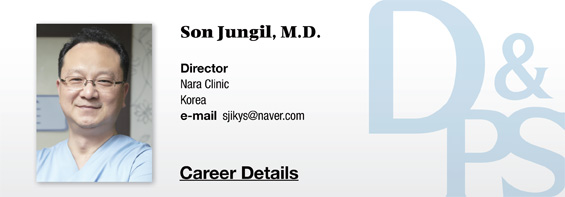
Looking at the history of lipid IV therapy, the first generation lipid IV therapy used fatty acids obtained from soy beans as the key ingredient. The second generation lipid IV therapies use fatty acids extracted from coconut oil or olive oil added with essential fatty acids such as MCT and oleic acid, etc. to allow rapid energy conversion and prevent vascular diseases. The most recent, third generation lipid IV therapies contain the above fatty acids as well as fish oil to increase the omega 3 content. This increases anti-inflammatory and immune support actions. The third generation lipid IV solutions also contain vitamin E and antioxidants and can be safely used in pediatric patients.
All-in-one IV solution
The all-in-one IV solution allows simultaneous injection of glucose, amino acids and lipids in a single infusion (Figure 5). As there is no need to add components to the injection, it also has a low risk of infection. However, a problem still remains regarding the incompatibility of water-soluble and fat-soluble components (Figure 5).

MG TNA Peri Combiflex MCT Peri Omap One Peri
Figure 5. Non-covered all-in-one IV solutions (for PPN) currently available
How can we resolve this incompatibility? We can create an emulsion when mixing the components of the IV solution using an emulsifier. An emulsion is a solution where water and oil exist in a stable mixture such as liquid soap, or milk, etc. Glycerol used in creating neutral fat and phospholipid made to create micelle are most common emulsifiers used in IV solutions. They can be used to create a stable emulsion of fat-soluble and water-soluble components that can be safely administered into blood vessels. One can kill two birds with glycerol as it can also turn into pyruvic acid which can serve as an energy source.
HELIOSⅡ/LOTUSⅡ/HYPERION – Manufacturer: LASEROPTEK(www.laseroptek.com)
The all-in-one IV solutions are also evolving from the first, second and third generations, thanks to the improvement of IV lipid therapies. Whereas the first generation all-in-one IV therapies were mainly used for caloric supplementation, the third generation all-in-one IV solutions have more varying uses including immune support, prevention of cardiovascular diseases, anti-inflammatory action, hepatoprotection, and antioxidant action, etc. The all-in-one IV solution is administered at the maximum rate of 3ml/kg per hour. Therefore, about 30 drops are given each minute in a patient weighing 50kg and almost 1 drop per second in a patient weighing 70~80kg. It is not advisable to add too many other components to the all-in-one IV solution as the lipid solution is murky and does not allow visualization of possible deposits. Therefore, only Vitamin B group or minerals should be added if addition is necessary. All-in-one IV solutions may be highly suitable for patients in post-surgical recovery, or elderly with low energy level. It may also benefit younger or pediatric patients who are unable to eat due to gastric disorders such as gastroenteritis.
-To be continued




















